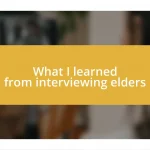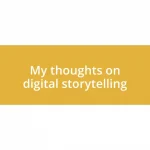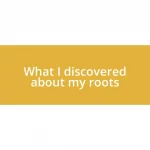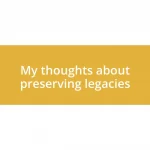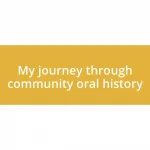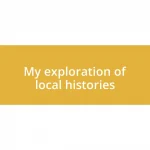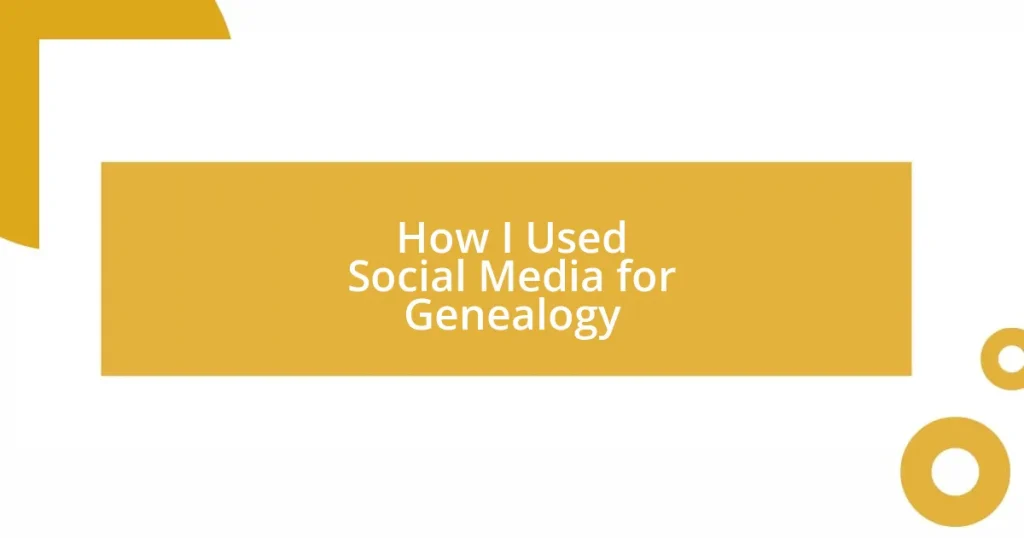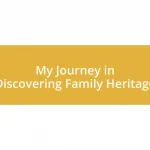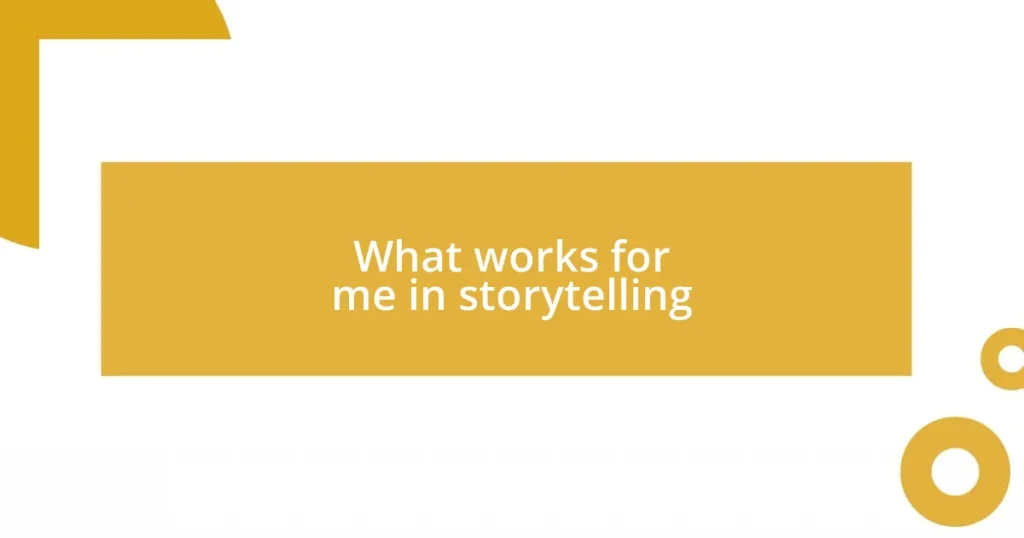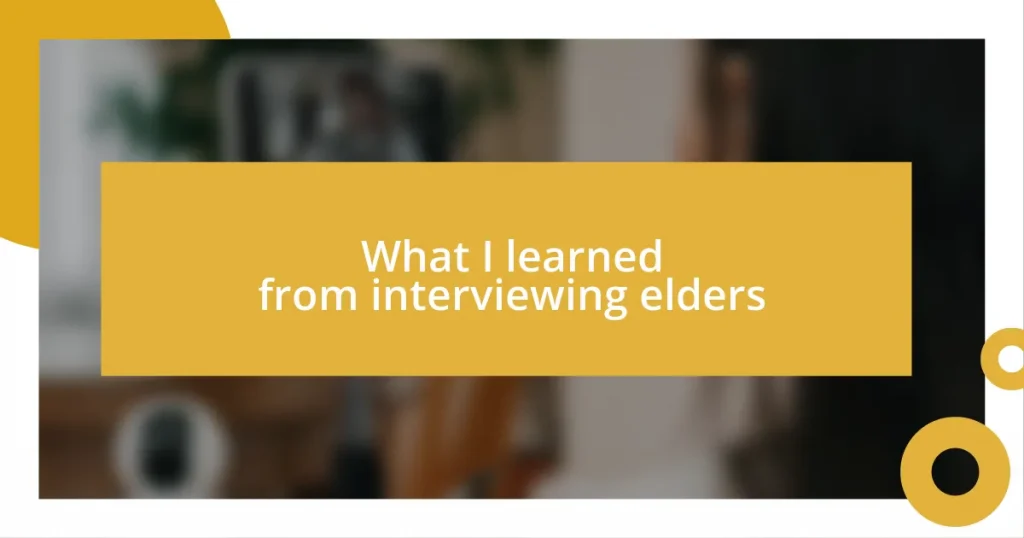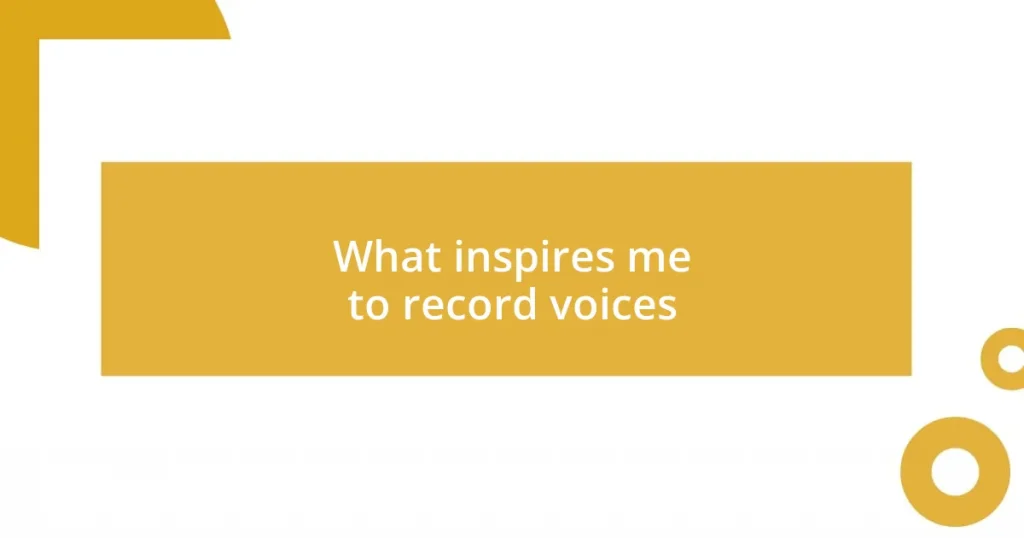Key takeaways:
- Social media is a powerful tool for genealogy research, enabling connections with distant relatives and sharing valuable resources.
- Choosing the right platforms, such as Facebook for groups and Twitter for real-time updates, greatly enhances the genealogy experience.
- Engaging in online communities fosters relationships and provides support, leading to significant breakthroughs in research.
- Documenting findings using digital tools improves organization and tracking, making it easier to uncover family histories effectively.
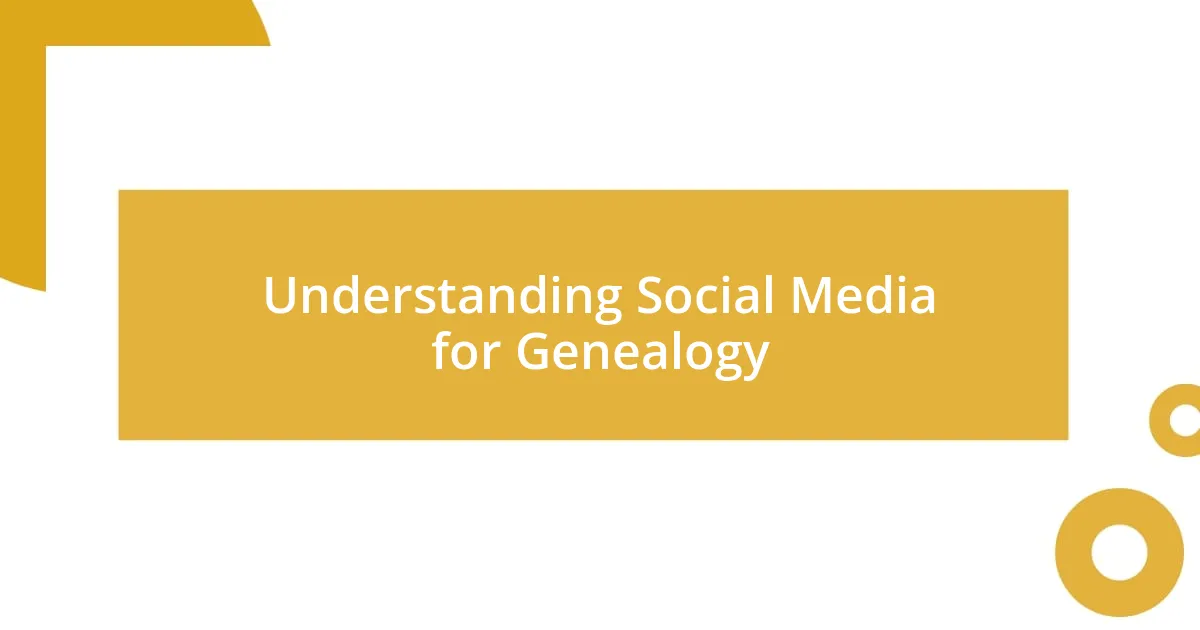
Understanding Social Media for Genealogy
Understanding the role of social media in genealogy has transformed my research approach dramatically. I still remember the day I stumbled upon a Facebook group dedicated to family history. The excitement of connecting with distant relatives who shared my last name was palpable; it felt like finding a piece of my family puzzle I didn’t even know was missing.
Social media platforms are not just for sharing vacation photos; they are vibrant spaces where genealogy enthusiasts gather to share tips, resources, and support. I often find myself scrolling through Twitter, where fellow genealogists post updates about newly digitized records or upcoming webinars. Have you ever considered how a single tweet can lead to breakthroughs in your own research?
What truly amazes me is seeing how different platforms cater to diverse needs. For instance, Pinterest has become my go-to for visual inspiration—flipping through pins of old family photos and unique archive projects. The emotional connection I feel when locating a cherished image or a distant relative’s story often cannot be put into words. Isn’t it incredible how social media can bridge generations and foster a sense of belonging in our family history journey?
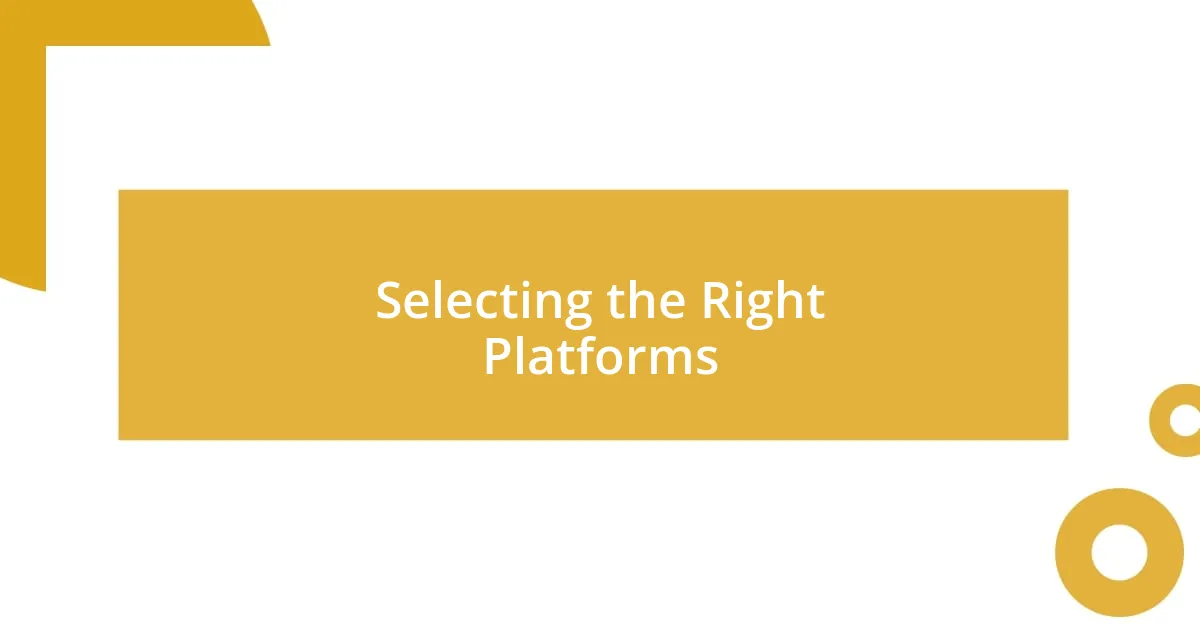
Selecting the Right Platforms
Choosing the right social media platforms for your genealogy journey can significantly enhance your research experience. I found that not every platform fits my needs equally. For example, while I initially joined Instagram to share family photos, I quickly realized that Facebook groups offered deeper engagement with others who were just as passionate about genealogy.
Here are some key platforms to consider based on my experience:
- Facebook: Excellent for joining groups and connecting with others who share your family interests.
- Twitter: Great for real-time conversations and updates from genealogists and historians alike.
- Pinterest: Perfect for visual inspiration and discovering unique genealogy projects and ideas.
- YouTube: Fantastic resource for tutorials and webinars that can guide you step-by-step through searches.
- Ancestry.com and MyHeritage: While more traditional, their social components allow you to collaborate and connect with relatives.
Deciding which platform to use really comes down to what resonates with you. I found joy in cross-referencing tips I received from Twitter tweets with resources I discovered through Facebook, enriching my search in ways I hadn’t expected. The emotional thrill of uncovering a new branch of my family tree through a simple connection is a feeling I wish for everyone to experience.
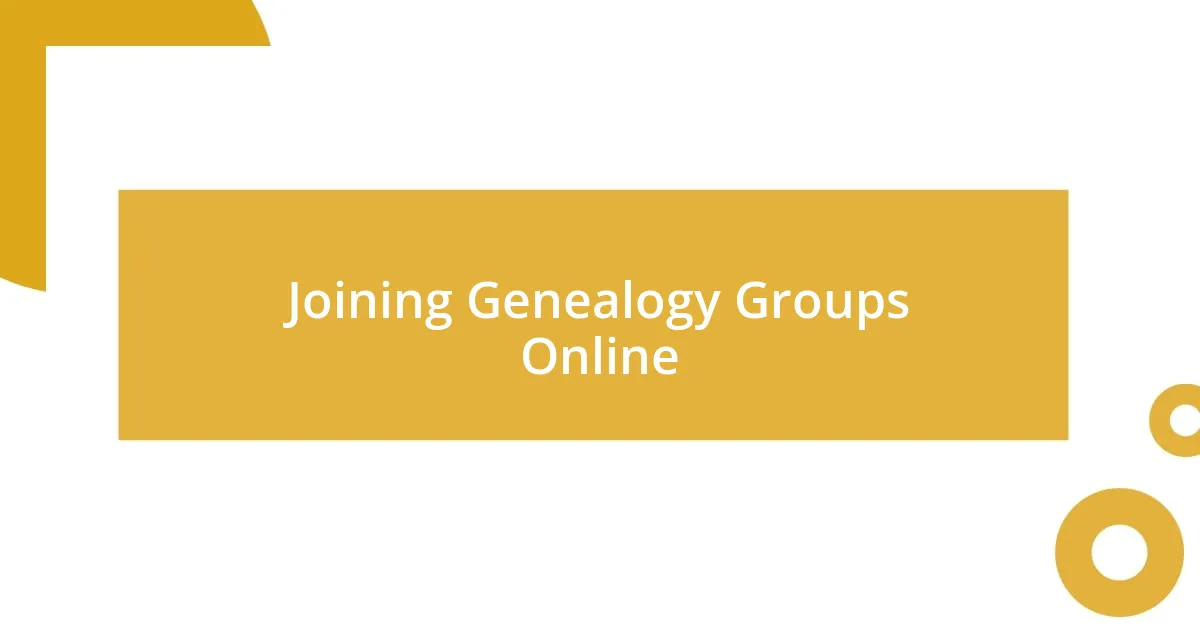
Joining Genealogy Groups Online
When I started my journey into genealogy, joining online groups was a game-changer. I remember the day I clicked “join” on a Facebook group dedicated to my family’s surname. Within hours, I was warmly welcomed by members who were eager to share their findings and tips. I can’t tell you how exhilarating it was to receive messages from people who had researched the same family line I was exploring. It felt like I had suddenly opened a door to a hidden world filled with stories and connections.
In my experience, the beauty of these groups goes beyond just sharing research. Often, someone will post a question about a particular ancestor or a historical event that sparks a lively discussion. These interactions not only deepen my understanding but also forge connections that are so meaningful. I remember a poignant moment when a member shared an old photograph of a family reunion from the early 1900s that included my great-grandmother. The joy and emotion I felt as I recognized her was unlike anything I had ever experienced.
What I’ve learned is that the diversity of online groups allows for a rich tapestry of perspectives. For instance, there are focused groups on specific regions, ethnic backgrounds, or even methodologies. Some members offer invaluable advice on tracking down elusive records or interpreting challenging documents. Engaging with such passionate individuals has not only enhanced my research but has also given me a sense of community. Here’s a quick look at some of the types of genealogy groups I’ve encountered:
| Type of Group | Focus |
|---|---|
| Facebook Groups | Sharing personal stories and research tips |
| Twitter Chats | Real-time discussions and resource sharing |
| Reddit Communities | Helping each other problem-solve specific genealogy issues |
| YouTube Pages | Tutorials and webinars on genealogy techniques |
| Dedicated Forums | In-depth discussions on genealogy topics |
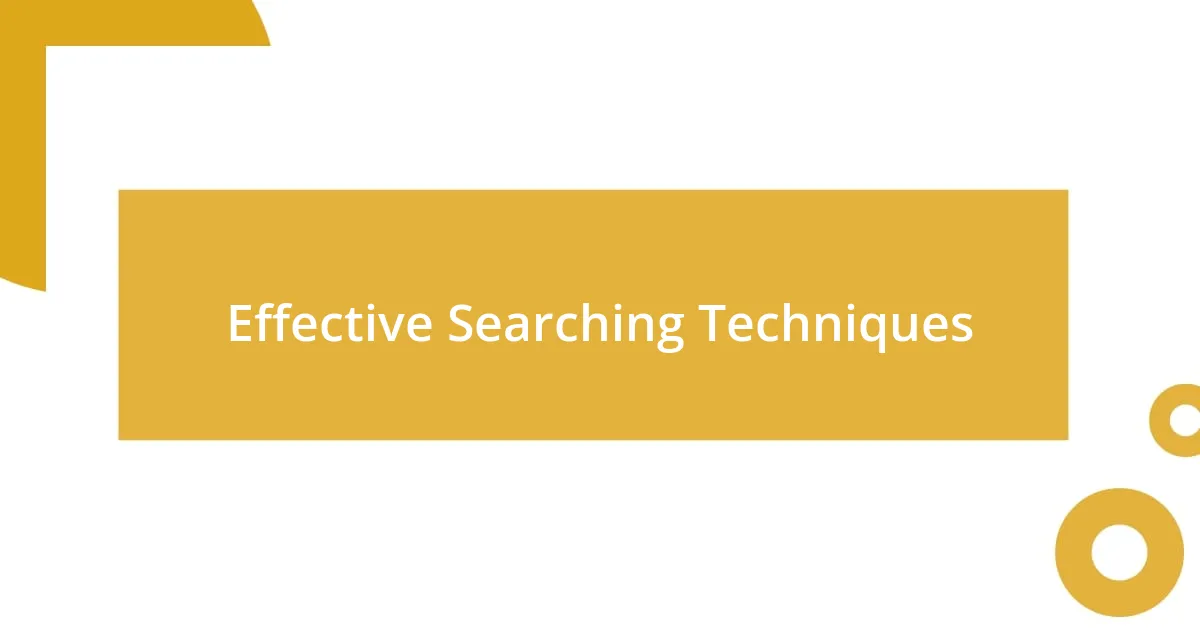
Effective Searching Techniques
Searching for genealogy information on social media can feel overwhelming, but I’ve found a few techniques that make the process more effective. First, I always start with specific keywords related to my ancestors, like their full names, places of birth, or unusual familial terms. For instance, when I searched for my great-grandmother, using her maiden name along with her hometown yielded unexpected results, including distant relatives who had done extensive research themselves. Have you ever tried narrowing your searches like this? You might be surprised at what you uncover!
Another technique I swear by is using hashtags strategically. For example, when I included hashtags like #GenealogyHelp or #FamilyHistory on Twitter, I saw a spike in responses from fellow researchers willing to assist. Hashtags create networks and communities around specific interests. It’s like casting a wide net in the ocean of social media—sometimes, the catch can be quite revealing!
Lastly, don’t underestimate the power of direct messaging. I remember reaching out to a genealogist I encountered in a Facebook group who had written an extensive post about my family’s origin. Rather than just commenting, I sent them a message, sharing my own findings and asking questions. The response was incredibly generous—they sent me links to records and even shared a few personal anecdotes about their discoveries. It’s moments like these that reaffirm the connection between genealogy and social media. Have you thought about who you might reach out to? You could discover a treasure trove of knowledge just waiting for you!
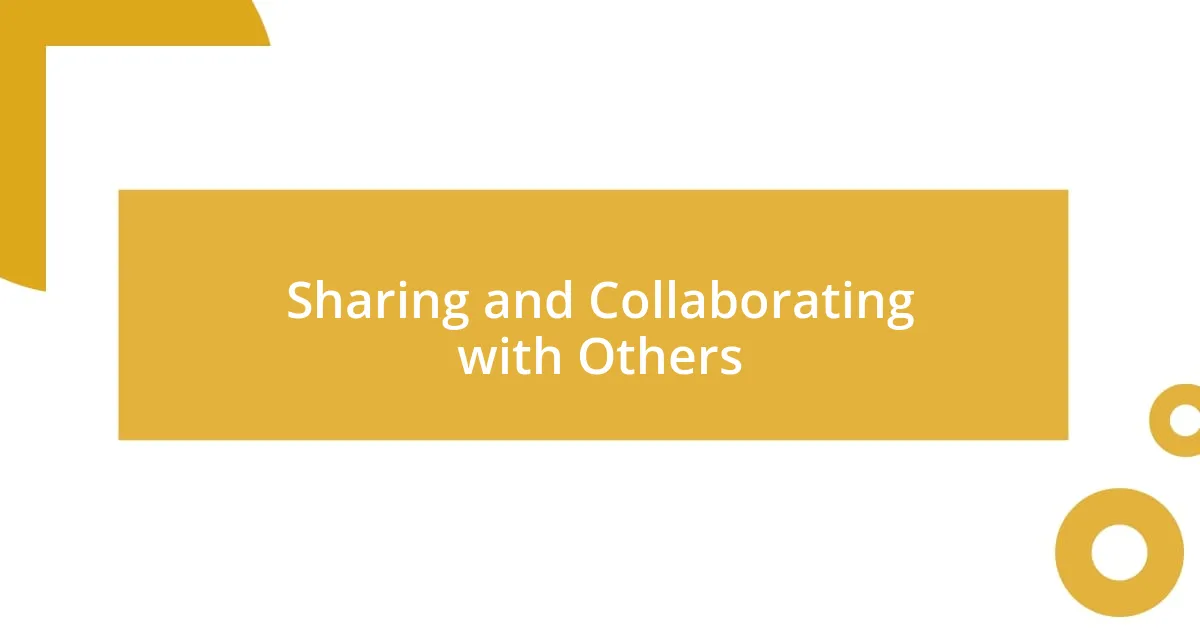
Sharing and Collaborating with Others
When it comes to sharing and collaborating, I’ve found that the value lies in the personal connections we create online. One day, I posted a query about a mysterious ancestor who seemed to vanish in the records. To my surprise, a fellow researcher reached out, sharing a similar experience with their own family. We spent hours exchanging information and theories, uncovering not only our ancestors’ pasts but also forming a friendship that still flourishes today. It’s fascinating how a simple question can lead to meaningful exchanges.
Utilizing social media for genealogy isn’t just about the research; it’s about fostering a sense of community. I once joined a virtual event where everyone presented their family’s history. When it was my turn, sharing my great-grandfather’s immigration story felt like unveiling a piece of art—each word interwoven with emotion and pride. The encouragement from others who resonated with my story made me realize how important it is to share these narratives. Have you ever felt that rush of validation when someone relates to your journey? It’s a reminder that we are all part of a larger tapestry.
Moreover, I’ve discovered how powerful collaboration can be in this realm. I remember working on a project with a group to create a shared family tree. Each contribution added depth and color to our collective history, revealing branches I would have never uncovered alone. Through video calls and shared documents, we brought our ancestors to life, and I was struck by the realization of how interwoven our lives have become. Isn’t it amazing how genealogical ties can rekindle connections with others? Every shared insight adds another layer to our understanding, enriching not only our family stories but also the bonds we create along the way.
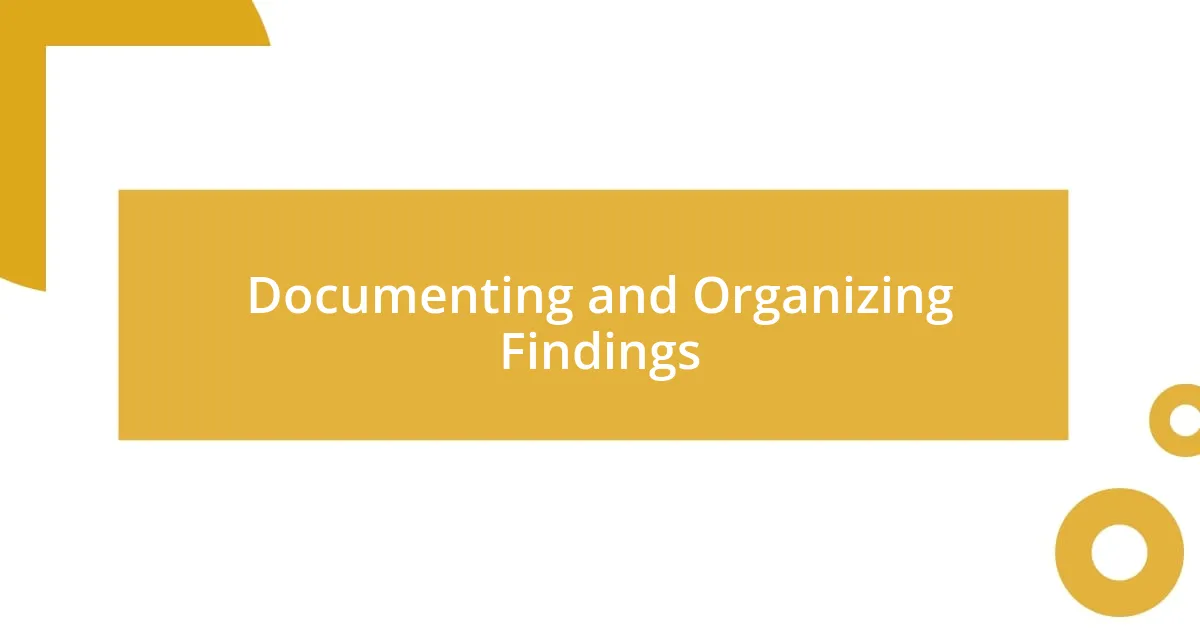
Documenting and Organizing Findings
Documenting my findings has been a game changer in my genealogy journey. With each new name or detail I unearthed, I meticulously logged it into a digital spreadsheet. The satisfaction I felt when I completed a branch of my family tree was exhilarating. Have you ever felt that rush when everything falls into place? When I look back at my organized records, it’s like viewing a map that traces not just names, but stories filled with life.
As I delved deeper into my research, I found it invaluable to create specific folders for different branches of my family. Each folder contained photos, documents, and even snippets of conversations I had with relatives. One day, going through my great-grandfather’s letters, I was struck by his voice; his fears and dreams spilled onto the pages. I couldn’t help but think, how often do we take the time to truly honor our ancestors in such a personal way? Organizing my findings not only preserved my hard work but also created a meaningful collection of memories that brought my family stories to life.
Additionally, I started using online tools like Evernote to compile and tag my notes, which significantly improved my tracking processes. For instance, when I began researching a particular cousin, I could easily reference all my related findings in one place. It saved me countless hours of searching through scattered notes. The moment I realized how seamlessly everything flowed, I couldn’t help but marvel at the efficiency of modern technology. Have you considered leveraging digital tools to boost your genealogy efforts? It’s remarkable how they can turn chaos into clarity.
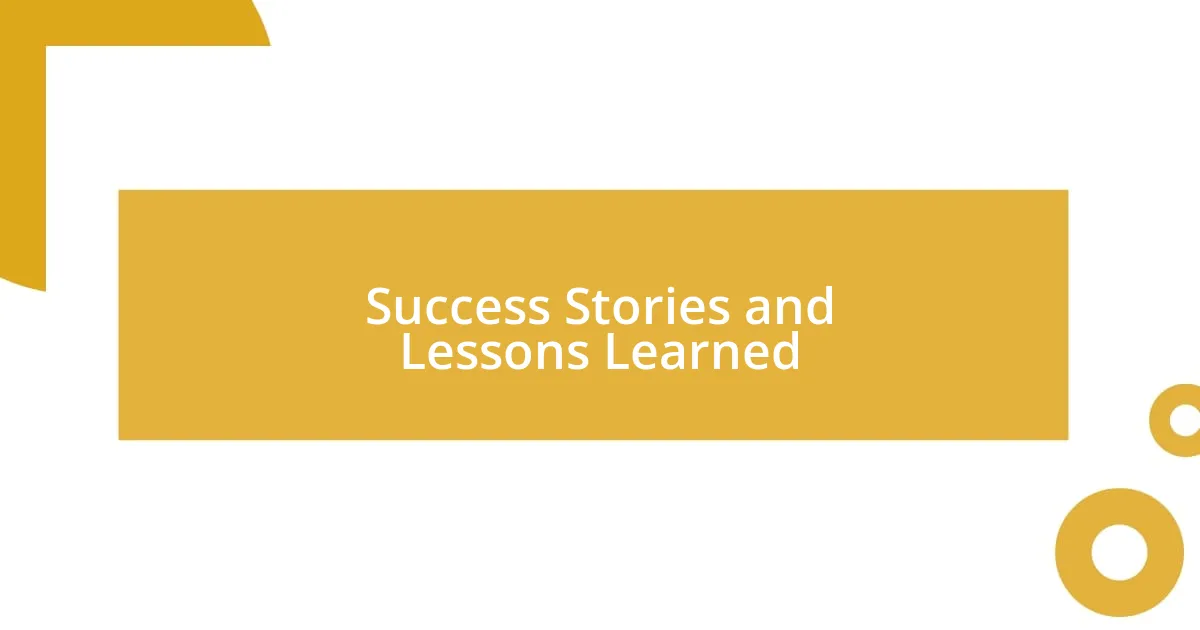
Success Stories and Lessons Learned
My experience with social media genealogy has gifted me with some unforgettable success stories. I remember joining a Facebook group dedicated to a specific geographical region where my ancestors lived. One day, a member posted a scanned photo of a family reunion that included my great-grandmother as a child. The joy and disbelief I felt when I recognized her face, smiling amidst distant relatives I never knew existed, was transformative. The connections formed through these shared images often lead to newfound relatives and cherished discoveries—have you ever stumbled upon a photo that made your heart race with possibility?
Through these online engagements, I’ve also learned the importance of patience and persistence. Once, I dashed off a tweet asking about an elusive great-uncle; several days passed with no response. Just when I was about to give up, a genealogist I followed retweeted my query. To my astonishment, that night, I received a direct message from someone who had just found a stash of family records. That instance taught me to stay engaged and hopeful, as the very next connection could hold the key to breaking through a brick wall in my research.
One of the most profound lessons I’ve gained is the transformative power of storytelling. I started sharing snippets of my family’s history on Instagram with compelling captions. A simple post about my grandmother’s journey during World War II sparked conversations, connecting me with others who shared similar experiences. It made me realize that each of our stories matters and can have a ripple effect—how often do we underestimate the impact our narratives could have on someone else’s search? The way we bring our ancestors’ pasts into the present is truly invaluable, breathing life into history and building bridges among researchers across the globe.

